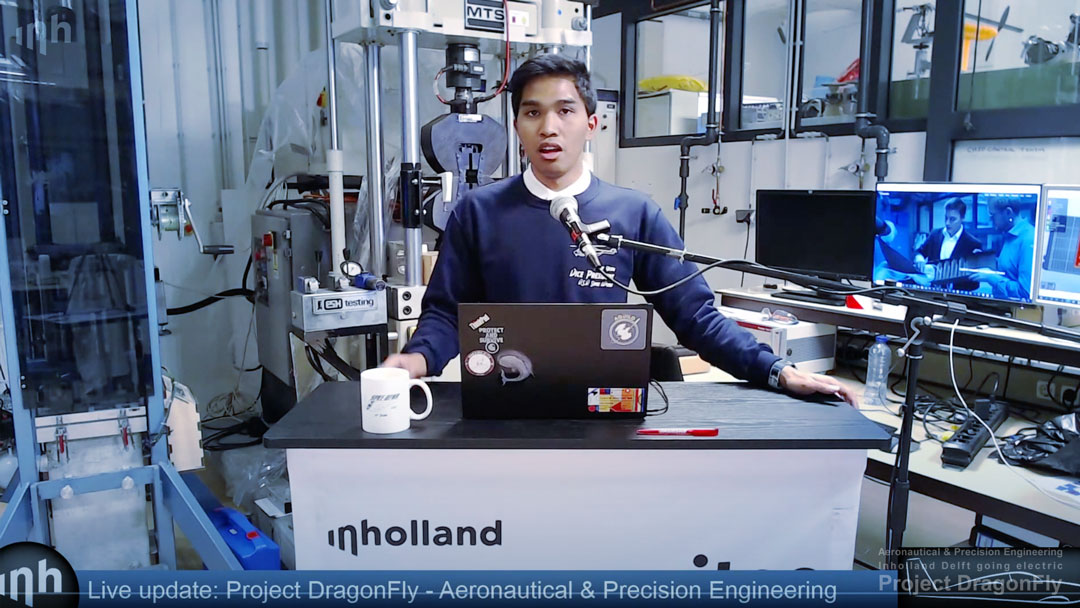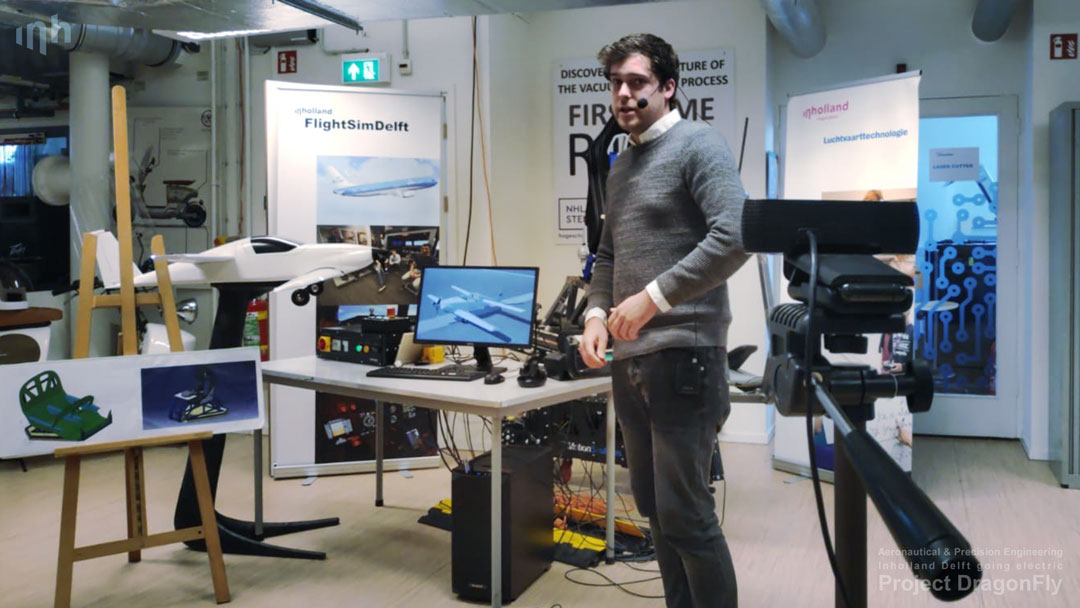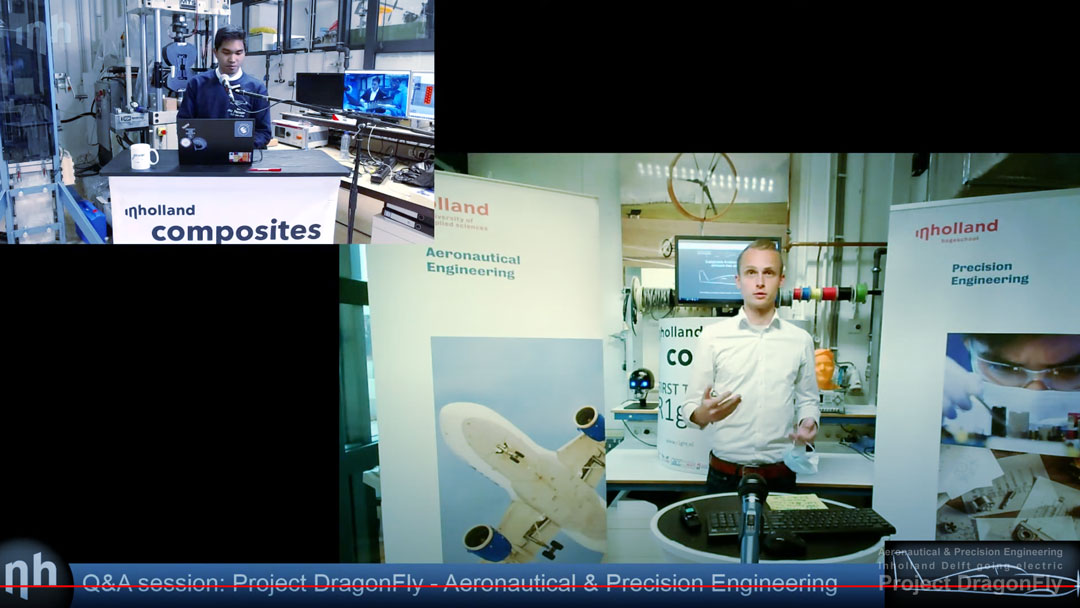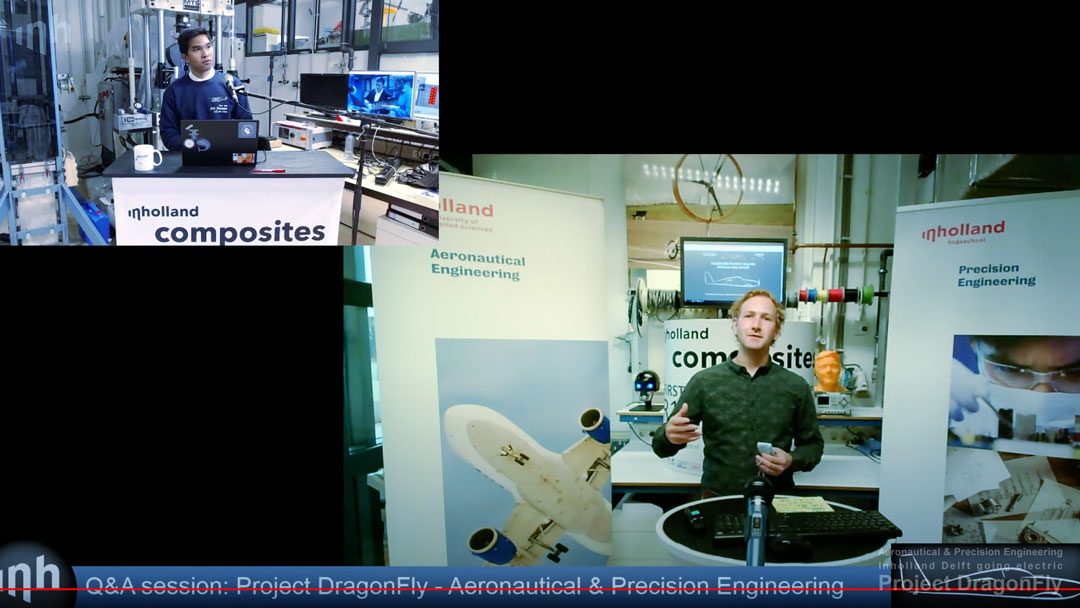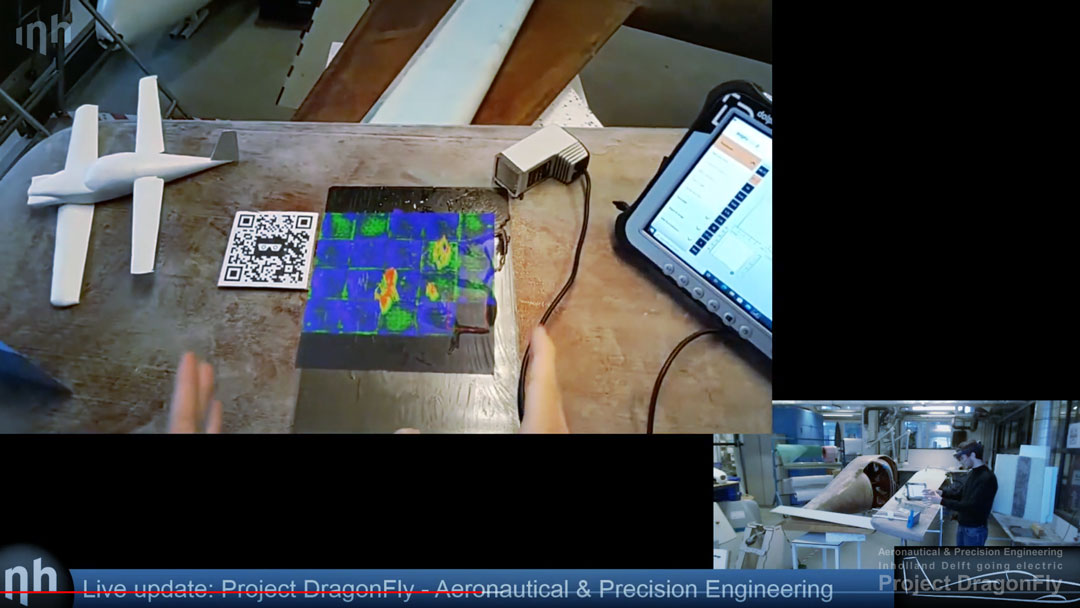Update on project DragonFly presented at guest lecture for members V.S.V. Sipke Wynia
V.S.V. Sipke Wynia, the Aeronautical & Precision Engineering Study Association at Inholland in Delft, approached project DragonFly for a guest lecture. Sipke, who will be celebrating their 55 years of existence next year, is aiming for more online activities for its members as the Corona virus is still limiting physical contact. As some of the first-year students have hardly been able to receive education from within the facilities, the applied sciences labs were used as a studio for broadcasting the lecture. This is a logical choice as these labs currently host project DragonFly which makes it possible to see more about this project “behind the scenes”.
- Date: Oct7 2020
- Location: Applied Sciences Labs Aeronautical & Precision Engineering Inholland Delft
- Project activity: knowledge sharing
As the main audience consisted of Aeronautical & Precision Engineering students from Inholland Delft, the guest lecture started off with a welcome from vice-president of the V.S.V. Sipke Wynia board, Yusuf Yusri (also 2nd year student at Inholland). Yusuf, standing at the material test area in the applied sciences labs, handed over the presentation to Arnold Koetje, program manager sustainable aviation and initiator of project DragonFly at Inholland. Koetje, who studied Aeronautical Engineering in Haarlem in the mid-ninetees before Inholland was founded, provided an introduction to sustainable aviation. He was supported by project team members, also with aeronautical engineering backgrounds at Inholland in Delft, who each revealed some details about the development and how they work together with the project partners.
First Mark Ommert, engineering lead of project DragonFly, explained how we work with students and researchers within the University, but also from the industry. In his presentation he highlighted the benefit of the Digital Twin development strategy and how this supports the integration of all the development steps.
Secondly Jonas Rieder provided a demonstration on Non Destructive Testing using a disruptive way of visualisation with the HoloLens2. With the support from the DolphiCam2 NDT equipment supplier he was able to visualise the laminate quality with 3D images realtime on the surface of the Dragonfly.
Ron Smetsers, one of the project engineers, showed how the Dragonfly is being prepared for the new electric powertrain. Smetsers, being a senior builder/pilot in model airplanes, explained the differences with modern electric motors compared with convential brushless DC motors used in model airplanes.
Marco Withag, also a project engineer in this development, provided an overview of the simulation systems used in this project, including the semi-full motion base and how it works with X-plane. During the YouTube livestream event the viewers were able to ask questions which worked out quite well.
V.S.V. Sipke Wynia, the viewers and presenters can look back at a successful (first) livestream guestlecture. You can expect more of these online updates on the project soon, subscribe to the YouTube channel to stay informed.
Below you can view the guestlecture, enjoy the show.

